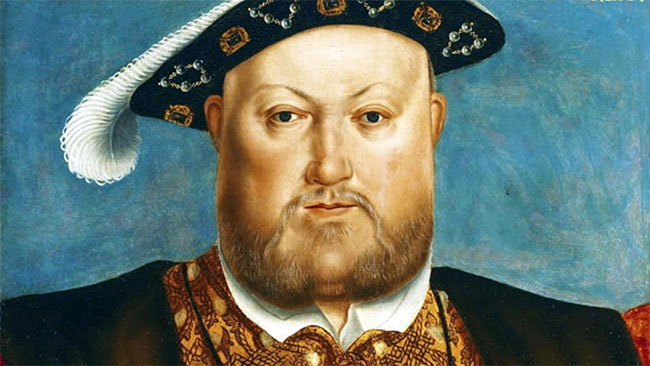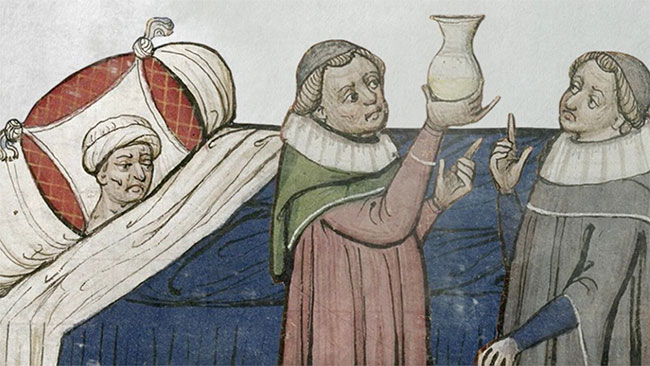The mystery of the sweat epidemic sweeping Europe
In 1528, King Henry VIII of England slept in a different bed every night, but not in the way you might think.
It wasn't the women, but the fear of a mysterious illness that kept King Henry VIII on the move almost daily that summer. The king was really alarmed about sweating sickness, a deadly disease that is now largely forgotten.

King of England, Henry VIII feared epidemic sweat during his reign.
Still, some scientists are fascinated by the mysterious disease, which swept through Europe many times during the Tudor period (the golden reign of King Henry Tudor or Henry VII). Since 1485, five plagues have raged in England, Germany and other European countries. But the origin of the epidemic and even the name of the disease are still unclear.
There is good reason for fear of sweating. It happens without any warning and seems unstoppable. Sudden feelings of fear, followed by headaches, neck pain, weakness, and sweating all over the body. The victim has a fever, rapid heart rate, and dehydration. Within 3 to 18 hours, 30 to 50% of people infected have died.
It is not clear who first contracted the disease, but some historians believe that the disease was brought to England by mercenaries hired by Henry VIII's father to take the throne of England for him and his children. male. This power grab ended the War of the Roses (the civil war for the crown) in 1487.

Illustration of a sick person sweating.
Sweating disease quickly became an epidemic in the region. It was 'a new disease, excruciating, painful, symptoms of which no man before that time had ever heard of,' wrote Richard Grafton, the King's printer.
But that record is not entirely correct. Before that, England had survived the scariest epidemic in history. From 1346 to 1353, the Black Death plague wiped out 60% of the world's population and killed more than 20 million people in Europe alone. But sweating sickness does not appear to be related to this pandemic. It has no skin symptoms and occurs randomly in different locations, always occurs after a period of prolonged rain or floods, and is usually aimed at the very rich or the very poor.
At that time, people had no way of knowing how the sweating disease attacked or spread. However, that didn't stop doctors from trying to find out, and the strange illness made a man named John Kays famous. He saw the disease as an opportunity - especially since it seemed to strike wealthy aristocrats. Kays nicknamed himself the more impressive-sounding Johannus Caius and began taking care of wealthy Englishmen, panicking and paranoid about the epidemic.

John Caius (1510 - 1573), English physician and scholar - painting circa 1560.
Caius also found another way to benefit from sweating: writing about it. In 1552, he published 'The Sweating Disease: A Medicine Against the Disease Commonly Known as the Sweating Disease'.
Considered a medical classic, it lays out the doctor's observations about the symptoms, prevention, and cure of disease. Given the medical knowledge of his day, Caius advised people to avoid fog, not to eat spoiled fruit, and to exercise regularly. He recommends that sick people drink herbal concoctions, sweat as much as possible, and avoid being outdoors.
Biomedical researcher Derek Gatherer writes: 'Although most of Caius' patients eventually died, he was ultimately wealthy enough to make a great fortune for his old Cambridge university. '. Today, a college in Cambridge still bears the name Caius.
Caius and other doctors have been unable to explain or prevent sweating. But the fact that members of the royal family flocked to doctors for help speaks volumes about the impact of the epidemic.
King Henry VIII was very afraid of contracting the disease during his reign. Many of his courtiers fell victim to the mysterious illness, including his mentor Cardinal Wolsey, who was lucky to survive, and Arthur, the King's younger brother, who died of the epidemic.
Thomas More, Henry VIII's advisor, wrote: 'One becomes safer on the battlefield than in the city'.

King Henry VIII and Queen Anne Boleyn sent court physician Butts to visit Cardinal Wolsey, who was suffering from sweating.
The sweating sickness ended as quickly as it started. The last translation was in 1551. About 150 years later, a variant known as the 'Picardy Sweating' reappeared in France, but neither of them struck again.
That makes it difficult for modern scientists and historians to study. They must rely on chronological data and primordial public health information to reconstruct sweat epidemics.
But in the end, scientists still haven't been able to define what sweating disease really is. Some people think it's a hantavirus, which causes a rare disease. Others suspect this is a symptom of the flu, food poisoning, or a recurring fever.
Regardless of the cause, sweating can leave a mark. When the great writer William Shakespeare wrote 'Henry IV, Part 2' in 1600, half a century after the last plague in England, one of his most famous figures, Falstaff, died of 'sweating' '.
- With sweat, you can know a lot about health and crime
- 9 think less people know about sweat
- Mystery story 'vampire' knows how to control corpses
- Why do some people sweat more than others?
- Mystery of the disease
- Sweating causes the foot?
- Ebola epidemic can attack Europe in the near future
- Discovering bees 'licking sweat to live'
- Harnessing power from sweat
- Make a drink from sweat
- The device detects health abnormalities through ... sweat
- Detect drug use through sweat
 13 causes of non-itchy rash
13 causes of non-itchy rash How the mouse with human ears changed the world?
How the mouse with human ears changed the world? The truth about 'fried rice syndrome!
The truth about 'fried rice syndrome! What is dental implant?
What is dental implant? Why do we sometimes sweat ... sometimes?
Why do we sometimes sweat ... sometimes?  Experts reveal, people who are constantly sweating are really healthy
Experts reveal, people who are constantly sweating are really healthy  Why do you sweat more than others?
Why do you sweat more than others?  Sweating: Normal or pathological?
Sweating: Normal or pathological?  Abnormal sweating: Red alert for health
Abnormal sweating: Red alert for health  Benefits of sweating on the body
Benefits of sweating on the body 